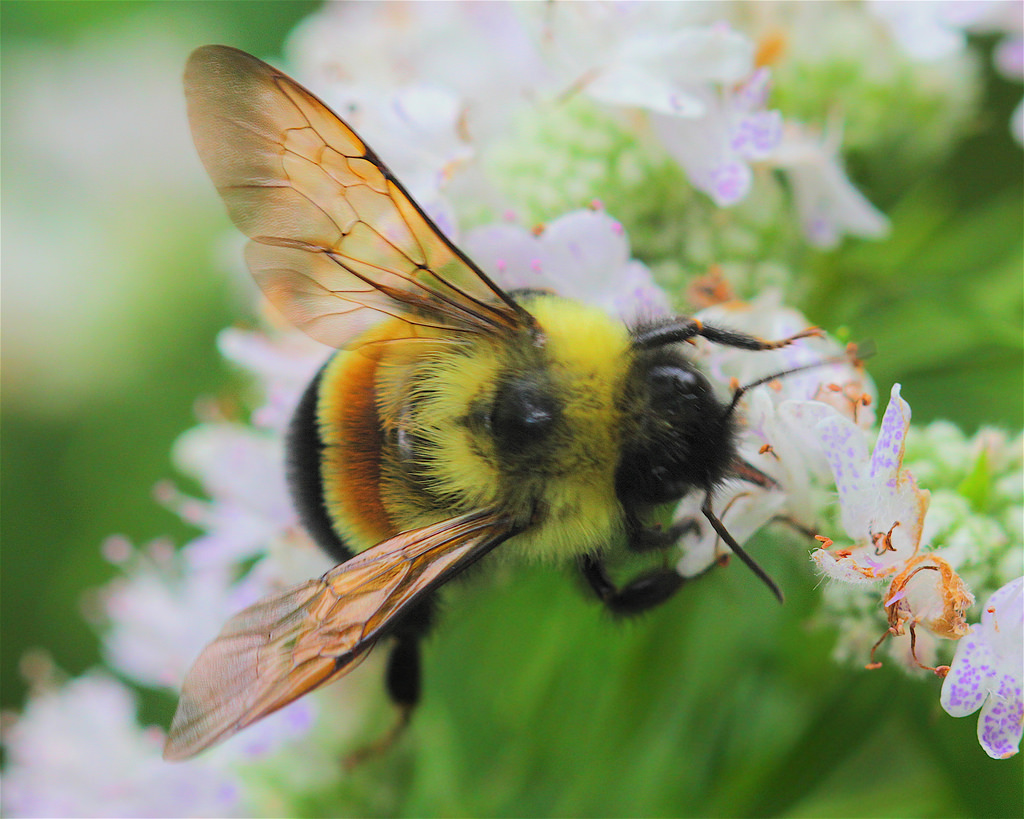RUSTY PATCH HONEY BEE
Background
Rusty patched bumble bees live in colonies that include a single queen and female workers. The colony produces males and new queens in late summer. Queens are the largest bees in the colony, and workers are the smallest. All rusty patched bumble bees have entirely black heads, but only workers and males have a rusty reddish patch centrally located on the back.

Rusty patched bumble bees once occupied grasslands and tallgrass prairies of the Upper Midwest and Northeast, but most grasslands and prairies have been lost, degraded, or fragmented by conversion to other uses.
Bumble bees need areas that provide nectar and pollen from flowers, nesting sites (underground and abandoned rodent cavities or clumps of grasses), and overwintering sites for hibernating queens (undisturbed soil).

Historically, the rusty patched bumble bee was broadly distributed across the eastern United States and Upper Midwest, from Maine in the U.S. and southern Quebec and Ontario in Canada, south to the northeast corner of Georgia, reaching west to the eastern edges of North and South Dakota.

Its range included 28 states, the District of Columbia and 2 provinces in Canada. Since 2000, this bumble bee has been reported from only 13 states and 1 Canadian province: Illinois, Indiana, Iowa, Maine, Maryland, Massachusetts, Minnesota, North Carolina, Ohio, Pennsylvania, Tennessee, Virginia, Wisconsin – and Ontario, Canada.
Population
Increases in farm size and technology advances improved the operating efficiency of farms but have led to practices that harm bumble bees, including increased use of pesticides, loss of crop diversity which results in flowering crops being available for only a short time, loss of hedgerows and the flowers that grew there, and loss of legume pastures.

Climate changes that may harm bumble bees include increased temperature and precipitation extremes, increased drought, early snow melt and late frost events. These changes may lead to more exposure to or susceptibility to disease, fewer flowering plants, fewer places for queens to hibernate and nest, less time for foraging due to high temperatures, and asynchronous flowering plant and bumble bee spring emergence.
Endangered
Several Service programs work to assess, protect, and restore pollinators and their habitats. Also, the Service works with partners to recover endangered and threatened pollinators and pollinator-dependent plants. Concern about pollinator declines prompted formation of the North American Pollinator Protection Campaign, a collaboration of people dedicated to pollinator conservation and education. The Service has a Memorandum of Understanding with the Pollinator Partnership to work together on those goals. The Service is a natural collaborator because our mission is to work with others to conserve, fish, wildlife, and plants and their habitats.

